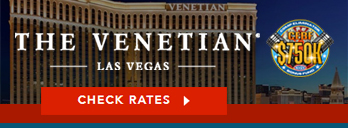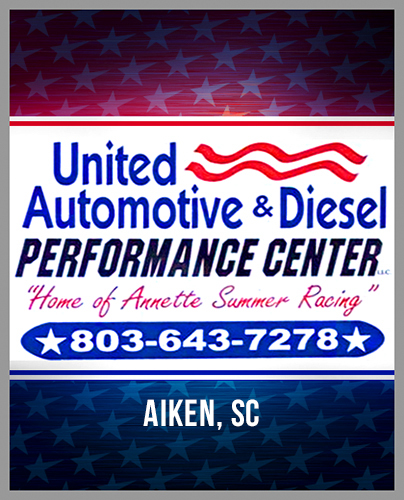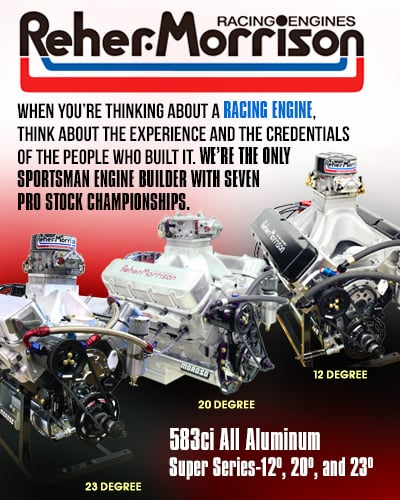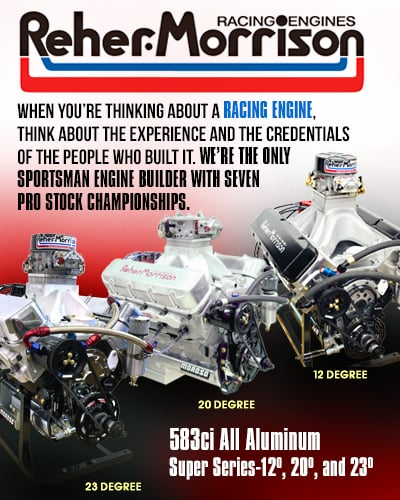THIS WEEK THERE WAS ALWAYS CASH AND LOTS OF THUNDER IN THE VALLEY
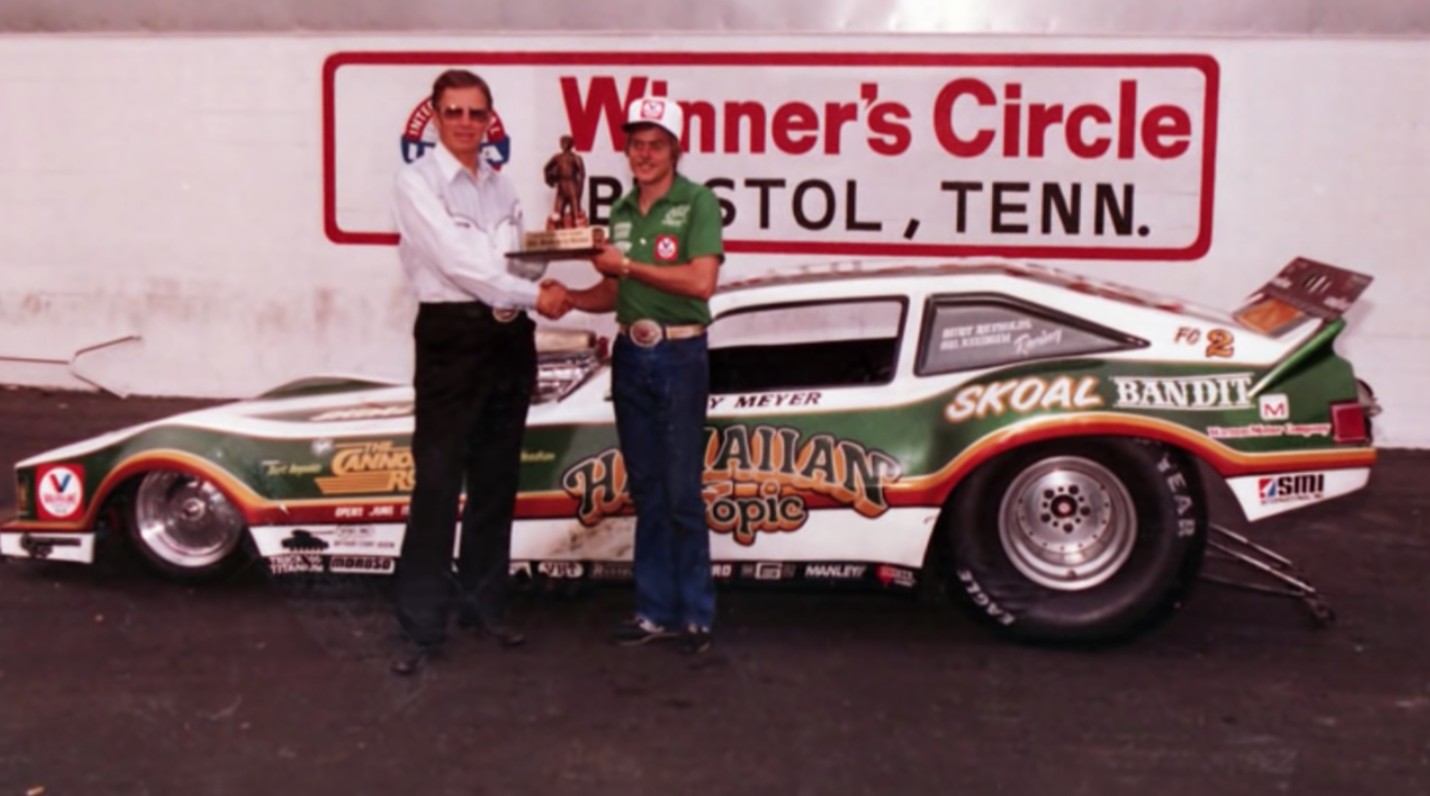
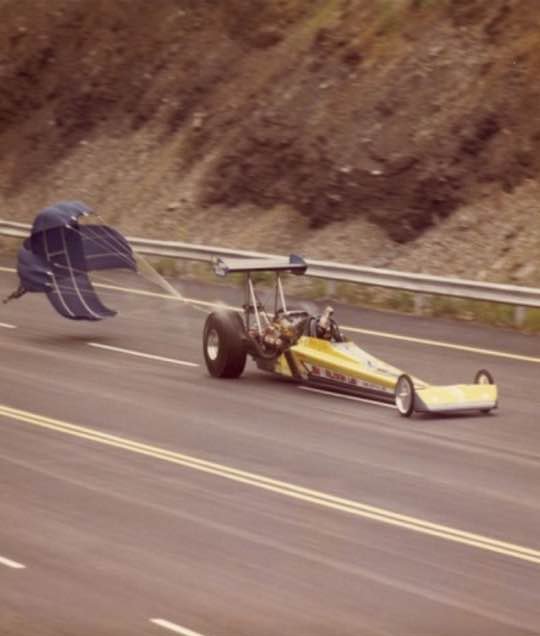 If there was one thing Larry Carrier excelled at more than arguing a point, it was thinking outside the box. The founder of the International Hot Rod Association, who was often outspoken on many topics, was a lot like Jim Tice, the founder of the American Hot Rod Association, in that he often doled out appearance money to ensure the leading participants were present at his events.
If there was one thing Larry Carrier excelled at more than arguing a point, it was thinking outside the box. The founder of the International Hot Rod Association, who was often outspoken on many topics, was a lot like Jim Tice, the founder of the American Hot Rod Association, in that he often doled out appearance money to ensure the leading participants were present at his events.
“It worked,” Ted Jones, Carrier’s second in command, said of the appearance money procedure. “He had the names to put on his advertising, and that attracted the fans. It worked very well, and for that reason, the IHRA was an almost instant success. The big names were always determined by what they did in NHRA competition. If you did well over there – you were considered a big name.”
In the 1970s, neither Carrier’s IHRA nor Tice’s AHRA had an event that came close to the caliber of the NHRA’s U.S. Nationals over Labor Day Weekend. But in 1980, Carrier made them all start talking. And even if it wasn’t a legit run at trying to outshine Indy, Carrier to what he set out to do... continue to be a thorn in Wally Parks’ side.
Carrier created a powerhouse event at his beautiful drag racing facility carved out of the mountains in Bristol, Tenn., known as Thunder Valley Dragway.
The IHRA Spring Nationals was Carrier’s marquee event, attracting the best players his appearance money could buy. In the past, appearance money didn’t amount to the best competition, and when rain visited the facility, which it did every year, the risk rarely matched up with the reward when it came to putting on the desired show.
In 1980, Carrier upset the apple cart.
The season before, the apple cart crossed the finish line with no wheels and no apples left. The 1979 event attracted more rain than many areas get in a year and forced a one-week delay. Then on the final eliminations day of the new date, rain delayed the first round until 7 PM on Sunday, with the final two cars crossing the finish line at 2 AM.
Carrier figured if he took all that appearance money and bankrolled it into the largest purse in drag racing at the time, more significant than the U.S. Nationals, the big names would show up anyway to get a larger slice of the pie.
On a piece of paper in his Bristol-based office, Carrier scribbled out the following figures - $20,000 to win either nitro division and $10,000 to win Pro Stock. Today, this kind of nitro payday would be almost $75,000, while Pro Stock would be close to $40,000. The full purse for the 1979 NHRA Winternationals was just under $100,000.
The purse wasn’t the only significant change. Carrier moved the date to mid-May to avoid the June thunderstorm/rain extravaganza, which often forced him to schedule on top of other events in a crowded June calendar.
 The calculating Carrier had religiously studied the Farmer’s Almanac.
The calculating Carrier had religiously studied the Farmer’s Almanac.
And for Carrier, the move worked. The real winners were not the racers but the fans who could boast one of the best experiences. Not only did they have the best acoustics their ticket could buy because of a dragstrip running down the middle of a valley. Thunder Valley now featured scoreboards that not only displayed elapsed times and sportsman dial-ins but also true winners that accounted for red lights and breakouts.
Drag racing journalist Dave Bishop who passed away in January 2021, was always a champion for Carrier’s series and told Competitionplus.com back in 2008; the event made a huge impact on drag racing, if not only to put the underdog on somewhat equal ground.
“Back in those days, it was a tremendous amount of money,” Bishop said. “It was extra huge. It was evident that [Carrier] intended to have the best field of drag racing that one could have. The IHRA was always the underdog, and they always tried to be one-up on the NHRA. That was what precipitated this whole thing.
“The place was always packed. You could see people on the hills, and it didn’t matter if it rained – they were there. They wanted to see a quality show. Take away the rain, and they got that. These race fans knew a good show and quality cars.”
Bobby Hilton remembers that first big-money race very well and with good reason. He won the Top Fuel money while driving the Jim & Allison Lee dragster.
Hilton qualified in the eighth and final position in the Top Fuel field. Back then, IHRA paired the quickest runner in the field with the quickest of the bottom half. That meant Hilton raced the defending IHRA Pro Dragster champion Connie Kalitta and beat him. He then stopped NHRA Div. 4 racer Walt Barbin before reaching the final round against No. 1 qualifier Richard Tharp.
Tharp broke on the final round burnout, handing the automatic victory to a driver who was overjoyed just to qualify.
“It was huge, a big moment for sure,” Hilton, who, along with his son Tyler won the NHRA’s Nostalgia Top Fuel crown last season. “It was big. Back in those days, $20,000 was a ton of money to win.”
Hilton’s salary for driving the car was 10 percent of the winnings, and on that day, he took home a whopping $2,000.
“I was rich,” Hilton said with a laugh. “I bought me a ’66 Olds convertible and a piece of luggage.”
Unfortunately for Tharp, the 1980 event would be the first of three heartbreaks where he dominated the event, only to lose in the final round due to some freak incident.
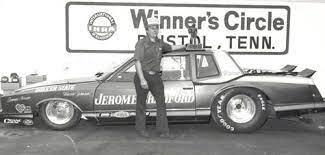 On the other side of the coin, Funny Car racer Billy Meyer couldn’t seem to lose. Meyer defeated the “other” Budweiser-sponsored Funny Car driven by Roy Harris in the 1980 event and scored final rounds in the next four IHRA Spring National big-money races, winning twice.
On the other side of the coin, Funny Car racer Billy Meyer couldn’t seem to lose. Meyer defeated the “other” Budweiser-sponsored Funny Car driven by Roy Harris in the 1980 event and scored final rounds in the next four IHRA Spring National big-money races, winning twice.
“That payday was a third of what I had in total sponsor money,” Meyer said. “For the first two years, when I made it to the final, I went and asked the other team if they wanted to split [the money], and they declined. I kind of always figured those winnings into my receivables list before the season started.”
While fuel racing understandably stole much of the thunder in the publicity game, worth noting is the Pro Stock winner took home a hefty prize as well.
Warren Johnson, known mainly for his prowess in dominating NHRA Pro Stock, credits the IHRA for teaching him how to win.
It also taught him survival skills following the 1979 event, which he won in the wee hours of a Monday morning in June. It was a victory he declared would be his last since he was $10,000 away from poverty, and announced his retirement only to return the next race and win the championship as well.
A funny thing happened on the way to retirement; Johnson met up with Buford, Georgia-based contractor Jerome Bradford.andd together they won the first two of the Bristol paydays.
In those days, the IHRA Pro Stock racers were often viewed as second-class racers, and even though Johnson began on the IHRA tour, he never let others’ opinions dictate the importance of what he and his fellow IHRA racers were doing on the largely regional series.
“I never looked at it as any kind of an egotistical thing or comparison to one, the other,” Johnson said. “I raced for a living. I came from dire poverty, and I wasn’t going back. So I’m probably the only Pro Stock racer that, other than maybe Glidden, that actually made a profit racing because that’s the way I set my business up. If I lose money any year racing, I quit that year. It was strictly a business to me.
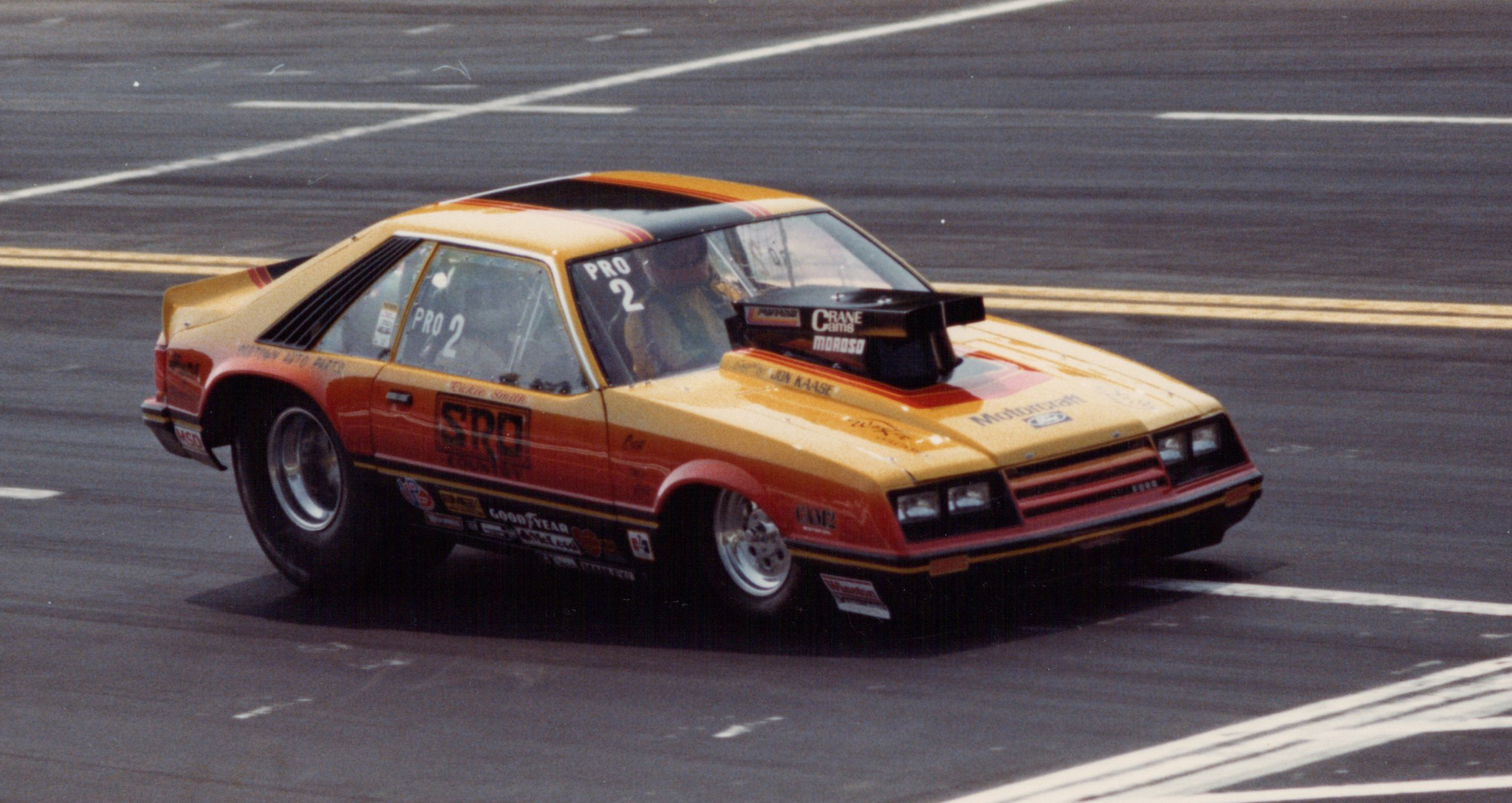
“So it was incumbent upon our team, myself, our team, to win those kind of races because that’s the stuff that paid the bills. Although Bradford didn’t care if I kept the money.”
In those days, $10,000 went a long way when it came to racing Pro Stock.
In those days, Johnson had what some might categorize as a love/hate relationship with Carrier.
“I actually enjoyed the racing, the IHRA thing,” Johnson added. “Carrier and I really didn’t see eye to eye too often, but we could both understand each other’s side. That’s one thing I admired about him. Yeah, he dug his heels in the ground and wasn’t going to move, but he could be swayed just like anybody else if you had a convincing argument. When they started offering the kind of money that they did, hell, you had to pay attention.”
Eventually, the prestige of the IHRA Spring Nationals went away when Winston moved their sponsorship from the Bristol-based series, but not before the event impacted the lives of those racers who attended and were fortunate enough to win. Rickie Smith needed the Carrier cash when he won the event in 1982, stopping Johnson’s streak at three in a row.
“I had just gone out on my own in 1982, so if there was someone who needed that money more than me, I’d like to meet them,” said Smith. “I wasn’t long gone from driving bulldozers for a living. And for someone like me, who was just getting by, it made a big impact on my program. It was a big deal for us, who had made a big gamble to go drag racing for a living.”
And gambling on the underdog epitomized Carrier’s spirit because he knew how hard one could bite. Carrier’s Spring Nationals gamble bit pretty hard for a while.

